How to get rid of the wireworm in potatoes?
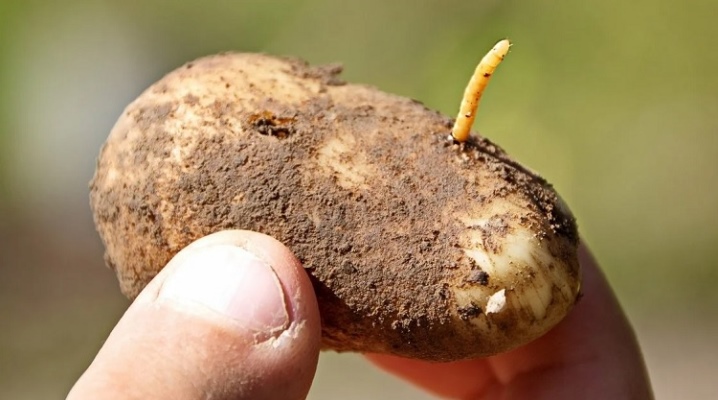
Potato gardeners are often faced with a variety of pests. One of them is a wireworm. If you do not notice the appearance of this insect in time, you can be left without a crop in the fall.
What is dangerous and what does it look like?
The wireworm is the larval form of the click beetle. An adult insect does not harm potatoes. But its larvae actively eat root crops. They got their name due to the fact that their appearance resembles a small piece of wire. They are also very difficult to crush.
Wireworms are omnivorous larvae. But if they have the opportunity, they prefer to eat potatoes and wheatgrass roots that grow next to the beds. You can detect the presence of a wireworm on your site by the following signs:
- potato stems and leaves become lethargic and slowly die;
- a large number of small pits are noticeable on potato tubers;
- during the cultivation of the site, larvae can be seen in the upper layers of its soil.
Having found these pests on your site, you must immediately get rid of them. Otherwise, they will cause great harm to the crop.
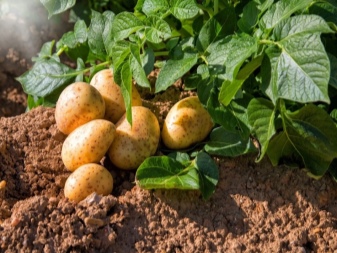
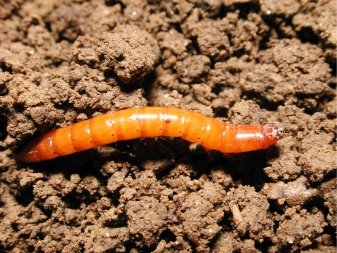
Reasons for the appearance
Click beetles lay their larvae in the places that seem to them the most favorable. Most of all they like acidic soils. Promotes the appearance of a wireworm on the site and the close arrangement of bushes to each other.
Also, an area with a lot of weeds can attract insects. The wireworm is especially fond of sow-thistle and wheatgrass. From them, the larvae can move to potatoes. It should be noted that all varieties are susceptible to their attack.
Attracts insects and too wet or dry soil. Therefore, in order to prevent the appearance of pests on the site, potato beds it is necessary to water properly.

Ways to fight
There are many ways to deal with a wireworm in a potato patch.
Folk remedies
Many gardeners prefer to use simple folk remedies for this purpose. This is the safest way to protect your site from pests.
- Natural enemies of the wireworm can help in the fight against larvae. These worms are usually destroyed by starlings, rooks, crows, tits. To attract them to your site, you need to hang drinkers and feeders on the trees. If you fill them regularly, the birds will quickly take root there and in the future will help in the fight not only with wireworms, but also with other worms and larvae. They are good at finding and eating small pests and domestic chickens.
- Earthworms and ground beetles help to destroy egg clutches of click beetles... In addition, the soil can be populated with a predatory nematode. It will not harm the crop, it will only destroy the wireworm.
- Another completely safe way to protect potatoes from pests is to plant marigolds or dahlias on the site, which scare away insects with their smell. You can also use other green manure plants. For example, rapeseed, spinach, sweet clover, buckwheat or rape. They need to be planted right next to the potato beds.
- In addition, mustard can be planted on your site.... The pest does not like this plant, so it avoids the places where it grows. Mustard should be planted closer to autumn. As soon as it grows up to 10-12 centimeters, it needs to be cut and dug up with the ground.
In the spring, the process must be repeated. In the process of decay, the stems will secrete bitter essential oils that repel the larvae.


The treatment of bushes with various solutions prepared from natural ingredients also helps to protect the area from the wireworm.
- Field herbs. To protect potatoes, you can use herbs such as celandine, coltsfoot, nettle, dandelion. They must be finely chopped and covered with boiling water. The herbal mixture should be infused for 2-3 days. After that, it can be used for soil cultivation.
- Onion peel... Often gardeners use onion peel infusion on their site. They need to spray the bushes. The husk itself can be buried in the ground before planting the potatoes. The smell of rotting onions will scare away not only the wireworm, but also the Colorado beetles.
- Potassium permanganate... This product is also used even before potatoes are planted. First, half a liter of pink potassium permanganate can be poured into each of the holes. Secondly, the tubers can be treated with a dark purple solution before planting.
- Ammonia. Spraying is carried out when planting potatoes. To prepare a solution, 50 ml of ammonia must be diluted in a bucket of hot water. You should also add 1 tablespoon of soap shavings there. Mix everything well and pour into a spray bottle. After that, the potato tops should be sprayed with the solution. You need to do this immediately after the first shoots appear in the garden.
When applied correctly, these simple remedies can help keep pests out of the crop.

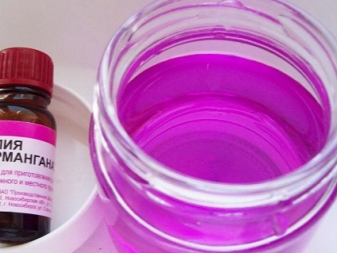
Drugs
It is used in the fight against insects and various chemicals. So, there are high-quality mineral fertilizers that help both improve potato yields and fight wireworms. The following nitrogen-containing preparations can be used to treat the site.:
- ammonium chloride;
- ammonium sulfate;
- ammonium nitrate.
All of them actively repel pests. Various insecticides can also be used to treat a potato field.
- "Aktara"... This product is introduced into the ground when potatoes are planted. It can be used dry or it can be dissolved in water. The main thing is to follow the instructions on the package. The manufacturer of this product guarantees that the wireworm will not touch the treated bushes.
- "Prestige"... This tool works on the same principle as the previous one. It should be used in the spring, just before planting potatoes.
- "Bazudin". This remedy is more powerful than the others. It is recommended to use it only if other methods of dealing with the wireworm do not work, and the area is very infected. Only young potatoes, which have not yet set tubers, are worth processing with this preparation.
When treating your area with insecticides, do not forget about protection: wear gloves and protect the respiratory tract with a gauze bandage.
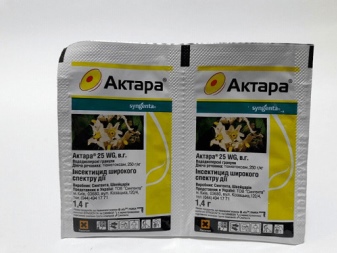
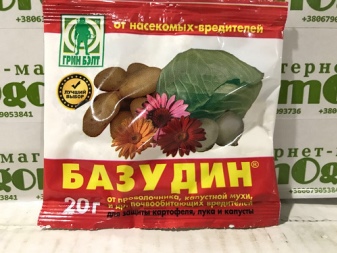
Agrotechnics
Liming the soil will also help to destroy the wireworm in the potato field. This method can significantly reduce the acidity of the soil. In order to create conditions that will definitely not contribute to the reproduction of the wireworm, dolomite flour or chalk can be introduced into the ground. It is not recommended to use fluff lime: in this way it will be possible to harm the potatoes themselves.
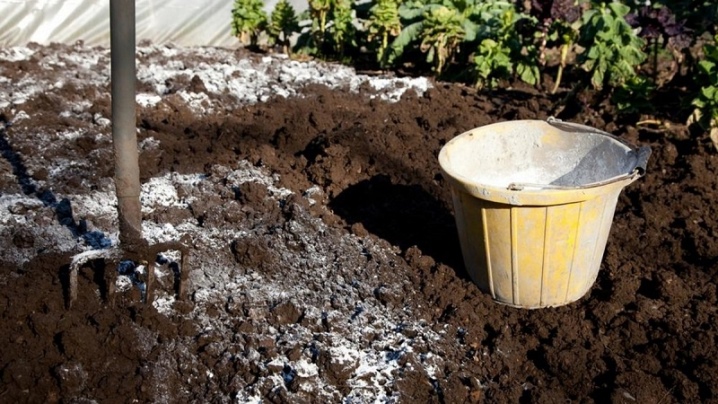
Traps
You can get rid of pests without using poison in other ways. It is recommended to use various traps in a small area. It will not be possible to remove all insects in this way, but it will still be possible to destroy most of the pests.
Traps can be made from scrap materials.
- Straw... Scatter small piles of straw or dry tops all over the area. After a week, they will need to be removed and destroyed outside the site. To consolidate the result, the procedure will need to be repeated several times.
- Lettuce leaves... This plant also seems attractive enough to the wireworm. The lettuce should be planted between rows or along the edges of small beds. When it grows up a little, it needs to be dug up and destroyed along with the wireworm that feeds on its roots.
- Cereals. They are used in the same way as a salad. In the spring, cereals or corn are sown in the aisles. As soon as the young seedlings grow a little, and their roots attract the wireworm, they will need to be carefully dug up and destroyed. If necessary, new plants can be planted on the site throughout the summer and dug up along with the larvae.
- Vegetables... This insect control method is one of the simplest. All you need to do is cut carrots, beets and potatoes into pieces, string on sticks and carefully dig in. The next day, the bait must be removed from the ground and destroyed along with the wireworm. In some cases, pieces of vegetables are placed in half-liter jars. They also bury themselves in the ground and dig up the next day.
- Potatoes with insecticides. In order to get rid of pests, you need to take an old or spoiled potato and soak it in any insecticide for a day. The next day, it must be buried in places where the wireworm accumulates. After two days, the potatoes should be dug up and destroyed along with the pests.
All lures can be used in turn. This will quickly and effectively get rid of the pests.
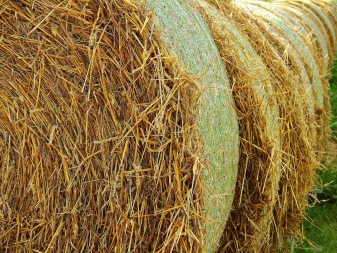

Preventive measures
In order to prevent the appearance of a wireworm, it is worth taking proper care of your site.
- In late autumn, the garden must be well dug... This is best done at the end of October, after the first frost. Dig up the soil thoroughly - this will destroy most of the larvae. After digging the site, they will sink deep into the ground and freeze over the winter.
- For the winter, you cannot leave old grass or root crops on your site. The wireworm should not have sources of heat or food.
- In the spring, the garden must be re-dug up. This should be done in warm weather. The procedure will allow you to destroy the eggs along with the larvae. In addition, in this way it will be possible to get rid of weeds, in which adult wireworms often hide. The dug up weeds will need to be burned immediately.
- In late spring and summer, the site also needs to be looked after. It is necessary to get rid of all the weeds that grow there. It is necessary to pull them out together with the roots - it is on them that pests often live. All plucked grass must also be destroyed immediately.
- You shouldn't grow potatoes in one place. This will lead to the fact that every year there will be more and more wireworms on the site. In addition, the soil will become depleted very quickly because of this. Where potatoes grew last season, legumes or crucifers can be planted next year. If you follow the crop rotation, there will be much fewer pests on the site.
- It is worth noting that the wireworm is very active during the dry season.... Therefore, in order to reduce the number of affected tubers, it is worth watering the bushes more often. To do this, you need to use warm settled water.
Getting rid of a wireworm in your area is not so easy. But if you adhere to all the rules - do not neglect preventive measures, keep the beds clean and use only proven methods of dealing with this pest - you will still be able to protect your crop from its attacks.
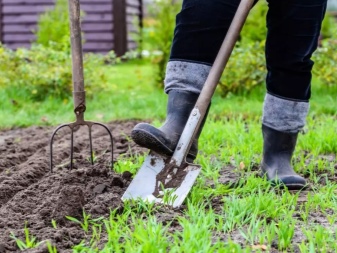
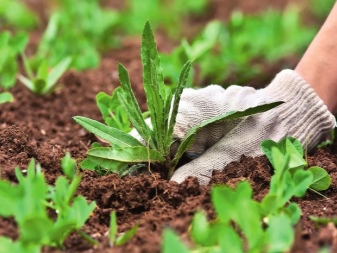
In the next video, you will find an easy way to destroy a wireworm in your area.













The comment was sent successfully.